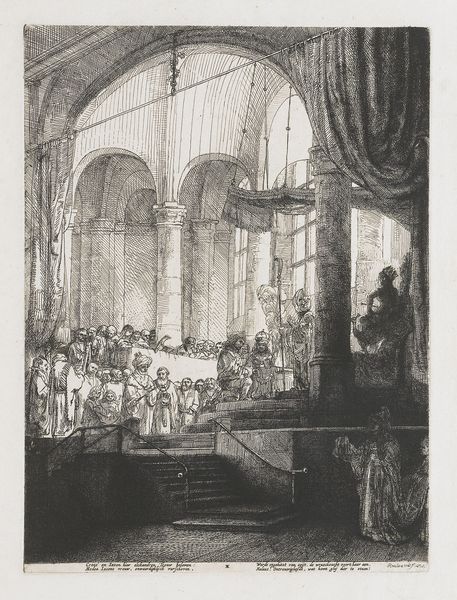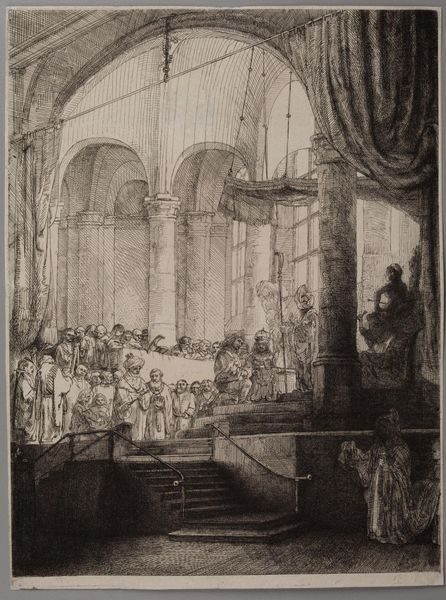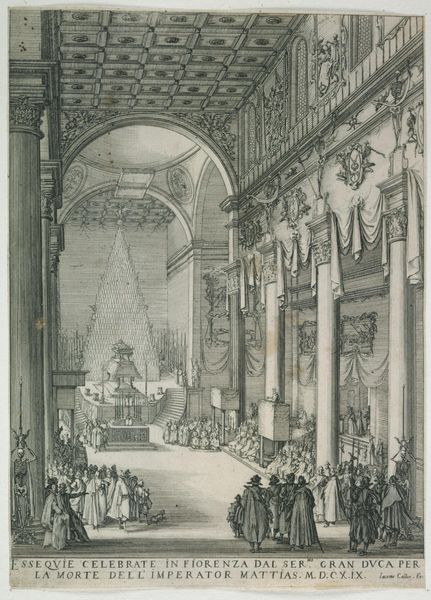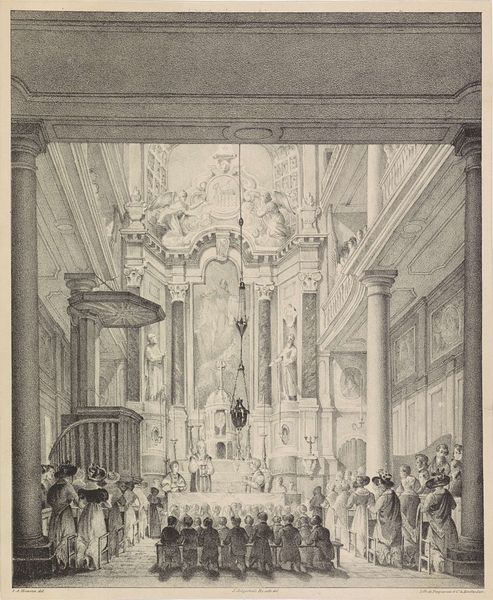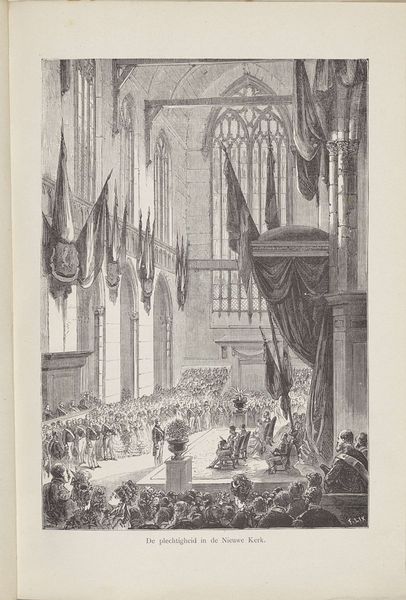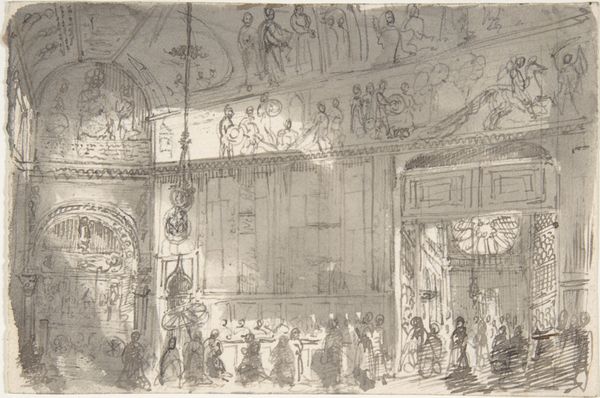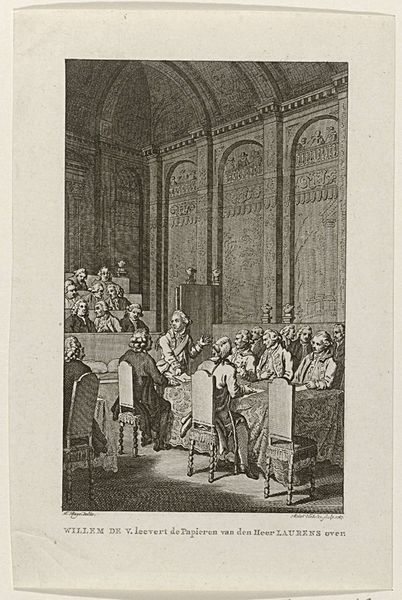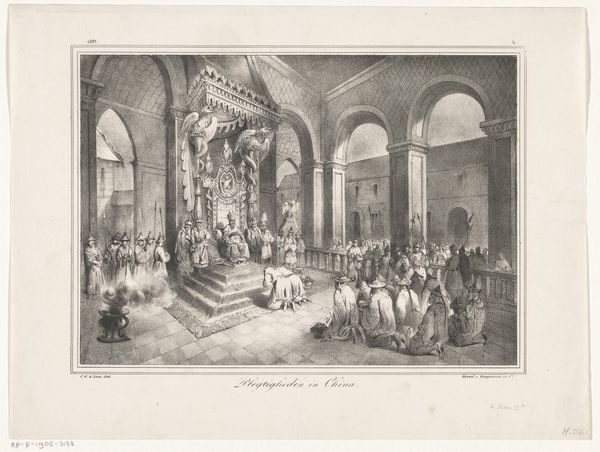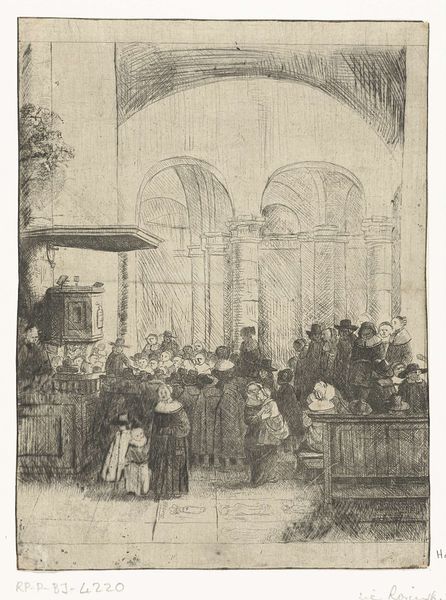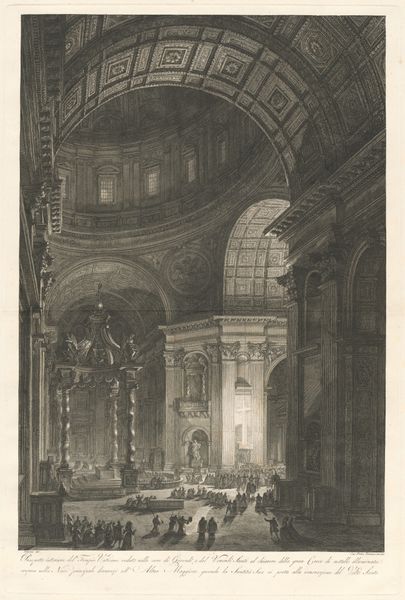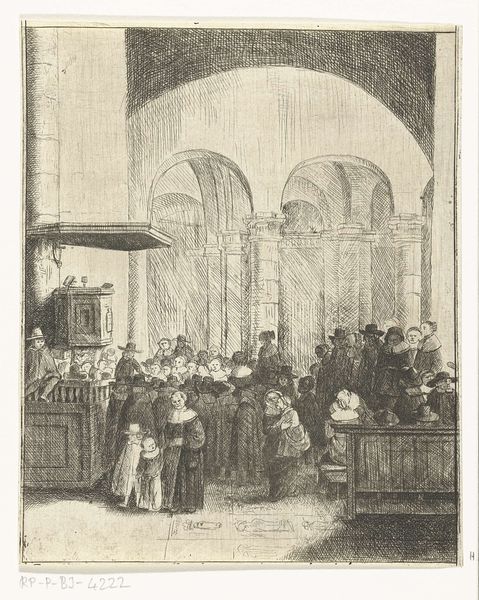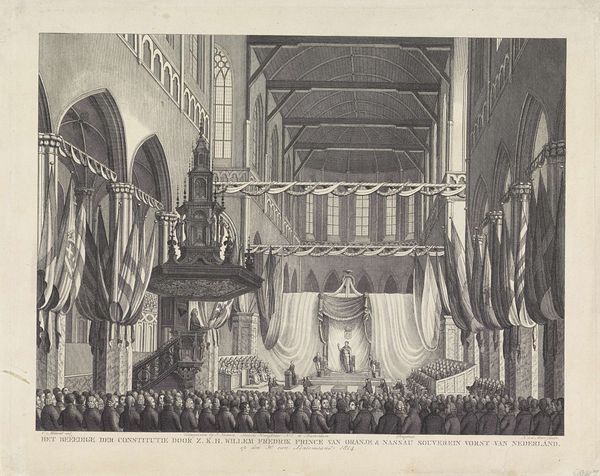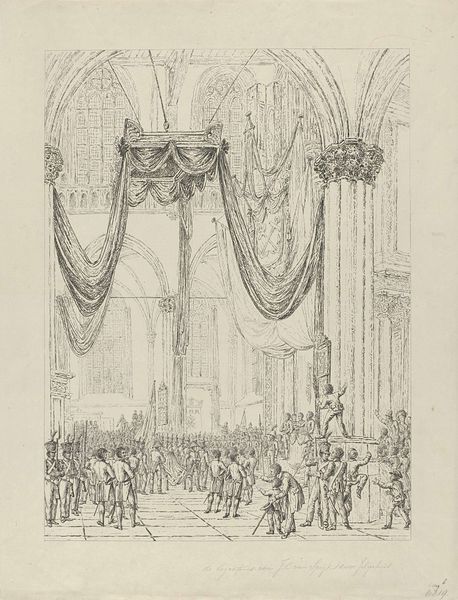
print, etching
#
narrative-art
#
baroque
#
dutch-golden-age
# print
#
etching
#
landscape
#
etching
#
figuration
#
line
#
history-painting
Dimensions: 9 7/16 x 6 15/16 in. (24 x 17.7 cm) (plate)
Copyright: Public Domain
Editor: Here we have Rembrandt van Rijn’s 1648 etching, "Medea- or the Marriage of Jason and Creusa." It’s incredibly detailed, and the sheer number of figures within this massive architectural space is striking. It seems to portray a formal ceremony of some kind. How do you interpret this work, considering Rembrandt’s time and perspective? Curator: It's important to consider this work not just as a scene but as a critique. The story of Medea is steeped in themes of betrayal, colonialism, and the marginalization of women. Rembrandt, living in a rapidly changing Dutch Republic fueled by its own colonial ventures, presents this scene of supposed harmony - Jason’s marriage - knowing full well the destructive rage simmering beneath the surface. Who benefits from this union, and at whose expense? Consider Medea, a foreign woman, abandoned for political gain. Can we view this piece as a commentary on the ethical complexities of power and progress during the Dutch Golden Age? Editor: That's fascinating. I was mainly focusing on the composition and light, but thinking about it as a statement on colonialism makes the tension in the scene much more palpable. It’s a very different lens than simply viewing it as a historical depiction. Curator: Precisely. And look closely. How are the figures rendered? Who is centered, who is relegated to the shadows? The power dynamics are embedded within the very structure of the image. Even the architectural grandeur seems to emphasize the coldness and political machinations at play, framing the human drama. What might the play between light and dark convey? Editor: The contrast definitely highlights some figures while obscuring others. I hadn't connected that to social power until now. Thank you for pointing that out. I think it will really shift how I perceive other works from that period as well. Curator: Indeed, viewing artwork with that expanded consciousness—historical context mixed with visual cues—can make any gallery visit far more insightful.
Comments
No comments
Be the first to comment and join the conversation on the ultimate creative platform.
